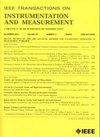水下多目标尾迹感知仿生海豹须摩擦电传感器
IF 5.9
2区 工程技术
Q1 ENGINEERING, ELECTRICAL & ELECTRONIC
IEEE Transactions on Instrumentation and Measurement
Pub Date : 2025-06-19
DOI:10.1109/TIM.2025.3580836
引用次数: 0
摘要
在复杂多变的水流环境中,现有的水下流场传感技术面临着巨大的挑战。海豹拥有高度敏感的须感应系统,使它们能够执行诸如捕食和环境感应等任务。本文从海豹须的流体动力触觉功能中汲取灵感,介绍了一种将基于须的传感机制与摩擦电纳米发电机技术相结合的仿生须摩擦电传感器(BWTS)。BWTS具有波浪仿生须和嵌入四个传感单元的柔性仿生毛囊结构。仿真和实验分析验证了BWTS在不同流场参数下能够有效捕获静止和运动水下目标的尾迹场特征。BWTS具有较高的可靠性,对水下目标的几何参数和运动参数的相关系数为0.98 ~ 0.99。误差小于10%。此外,其强大的方向识别和流场特征感知能力也得到了验证。BWTS作为一种非接触式水下流场传感技术,将为提高水下航行器的传感能力提供一种创新途径。本文章由计算机程序翻译,如有差异,请以英文原文为准。
Bionic Seal Whisker Triboelectric Sensor for Underwater Multiobject Wake Perception
Existing underwater flow field sensing techniques encounter significant challenges in complex and variable flow environments. Seals possess a highly sensitive whisker sensing system that enables them to perform tasks such as predation and environment sensing. Drawing inspiration from the hydrodynamic tactile function of seal whiskers, this article introduces a bionic whisker triboelectric sensor (BWTS) that integrates whisker-based sensing mechanisms with triboelectric nanogenerator technology. The BWTS features a wavy bionic whisker and a flexible bionic follicle structure embedded with four sensing units. It is verified through simulation and experimental analysis that the BWTS can effectively capture the wake field characteristics of stationary and moving underwater objects under different flow field parameters. The BWTS demonstrates high reliability, achieving correlation coefficients of 0.98–0.99 for the geometrical and kinematic parameters of underwater objects. The error is less than 10%. Additionally, its strong directional recognition and flow field feature sensing capabilities have been validated. As a noncontact underwater flow field sensing technology, BWTS will provide an innovative approach to enhance the sensing capability of underwater vehicles.
求助全文
通过发布文献求助,成功后即可免费获取论文全文。
去求助
来源期刊

IEEE Transactions on Instrumentation and Measurement
工程技术-工程:电子与电气
CiteScore
9.00
自引率
23.20%
发文量
1294
审稿时长
3.9 months
期刊介绍:
Papers are sought that address innovative solutions to the development and use of electrical and electronic instruments and equipment to measure, monitor and/or record physical phenomena for the purpose of advancing measurement science, methods, functionality and applications. The scope of these papers may encompass: (1) theory, methodology, and practice of measurement; (2) design, development and evaluation of instrumentation and measurement systems and components used in generating, acquiring, conditioning and processing signals; (3) analysis, representation, display, and preservation of the information obtained from a set of measurements; and (4) scientific and technical support to establishment and maintenance of technical standards in the field of Instrumentation and Measurement.
 求助内容:
求助内容: 应助结果提醒方式:
应助结果提醒方式:


